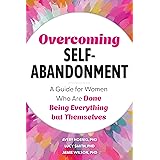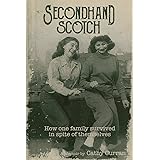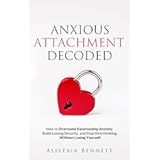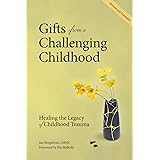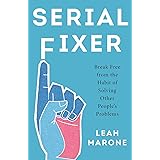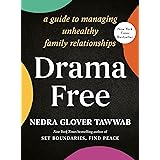Are you feeling trapped by a cycle of impulse purchases, where the momentary thrill of shopping is quickly followed by regret or financial stress? The accompanying video offers a helpful introduction to the challenges associated with shopping addiction. However, a deeper understanding and a more structured approach can be taken when seeking to regain control. Overcoming shopping addiction is a significant journey, but it is one where genuine freedom and financial peace can be found through consistent effort and a clear strategy.
This challenge, often referred to as compulsive buying disorder, affects numerous individuals globally. It is not merely about spending too much money; rather, it is characterized by an uncontrollable urge to shop, often driven by emotional distress or a desire to escape negative feelings. While the immediate satisfaction from a purchase can feel powerful, it typically proves fleeting, leaving behind guilt, anxiety, and often substantial debt. Taking the first steps towards understanding these patterns is incredibly empowering, and positive changes can indeed be made.
Identifying Triggers: Unmasking the Roots of Compulsive Buying
The initial and perhaps most crucial step in overcoming shopping addiction involves identifying the specific triggers that incite the urge to shop. This is a highly personal process, as what prompts one person to spend compulsively may not affect another. Triggers are typically categorized as either emotional or situational.
-
Emotional Triggers: The Internal Cues
Emotional states are frequently found at the core of compulsive shopping behaviors. Feelings such as stress, boredom, loneliness, sadness, anxiety, or even excitement can all be powerful drivers. For instance, a person might turn to online shopping when feeling overwhelmed by work deadlines, seeing it as a temporary escape. Alternatively, boredom during a quiet evening can lead to aimless browsing that escalates into impulsive purchases. Understanding that shopping is being used to self-soothe or to fill an emotional void is incredibly insightful. It is through this recognition that healthier coping mechanisms can begin to be developed.
-
Situational Triggers: External Influences
Beyond internal emotions, certain external circumstances or environments can also act as triggers. These might include walking past favorite stores, receiving promotional emails, seeing advertisements on social media, or even spending time with friends who have similar shopping habits. Holiday sales, clearance events, or seasonal marketing campaigns are often powerful situational cues that can be difficult to resist. Awareness of these external pressures is paramount for creating protective strategies, such as unsubscribing from marketing lists or choosing different routes to avoid tempting storefronts.
To effectively identify these triggers, a shopping journal can be an invaluable tool. For a period, perhaps a few weeks, meticulous notes can be kept on every instance an urge to shop arises, or when a purchase is actually made. Questions that can be asked include: What time was it? Where was I? How was I feeling emotionally? Who was I with? What was bought? How did I feel immediately before and after the purchase? Patterns are often revealed through this diligent tracking, highlighting key moments where intervention can be applied.
Setting a Realistic Budget: A Foundation for Financial Control
With an understanding of triggers established, a practical framework for managing finances becomes essential. Implementing a budget is not merely about restricting spending; it is about empowering oneself to make conscious choices about money and regaining a sense of control over one’s financial future. A well-crafted budget serves as a roadmap, guiding spending decisions and preventing impulse purchases that undermine financial stability.
The budgeting process typically begins by itemizing all monthly income and then listing all essential expenses. These fixed costs might include rent or mortgage payments, utility bills, loan repayments, and groceries. Once these necessary expenditures are accounted for, a clearer picture of discretionary income emerges. A specific, manageable amount should then be allocated for non-essential items or entertainment. It is crucial for this figure to be realistic and sustainable, ensuring that the budget is adhered to without feeling overly restrictive or impossible to maintain.
A highly effective method for sticking to a budget, particularly for discretionary spending, is to use cash rather than credit cards. The act of physically handing over money creates a more tangible connection to the purchase, often leading to greater deliberation before an item is bought. The psychological impact of seeing cash dwindle can be a powerful deterrent against impulse buying. Furthermore, employing a “cooling-off” period for any non-essential item is often beneficial. If something is desired, a waiting period of 24-48 hours can be implemented before the purchase is finalized. This allows time for the initial excitement to subside, making it easier to determine if the item is truly needed or merely a fleeting desire.
Finding Fulfilling Alternatives: Redirecting Energy and Desire
Overcoming shopping addiction is not solely about stopping a behavior; it is also significantly about replacing it with healthier, more fulfilling activities. The void that compulsive shopping often attempts to fill – whether it is for excitement, distraction, connection, or a sense of accomplishment – needs to be addressed with constructive alternatives. Discovering new passions or rediscovering old hobbies can be transformative in this process, offering genuine satisfaction that does not depend on material acquisition.
A diverse range of activities can serve as powerful antidotes to the urge to shop. Creative pursuits such as painting, writing, playing a musical instrument, or engaging in crafts can provide a healthy outlet for self-expression and a sense of achievement. Physical activities, including hiking, cycling, swimming, or joining a local sports team, offer both physical and mental benefits, releasing endorphins that naturally elevate mood. Similarly, learning new skills – be it a language, coding, or gardening – can stimulate the mind and provide a productive focus. These activities contribute to personal growth and often lead to lasting satisfaction, a stark contrast to the temporary high derived from shopping.
Furthermore, strengthening social connections and engaging in community-based activities can be highly beneficial. Spending quality time with friends and family, participating in volunteer work for a cause one cares about, or joining a book club or community group can foster a sense of belonging and purpose. These interactions can provide emotional support and a distraction from shopping-related thoughts. It is important for these alternative activities to be scheduled proactively, ensuring that time is intentionally set aside for them. This creates a structured routine that minimizes opportunities for old habits to resurface, effectively redirecting energy towards more positive endeavors.
Practicing Mindfulness: Cultivating Awareness and Intentionality
Mindfulness is a practice that involves bringing one’s full attention to the present moment, observing thoughts and feelings without judgment. For those struggling with shopping addiction, mindfulness can be a potent tool, creating a crucial pause between the urge to shop and the act of purchasing. It allows for a moment of reflection, enabling a shift from automatic, reactive behavior to conscious, intentional decision-making.
When an urge to shop arises, instead of immediately giving in, a conscious decision can be made to pause. During this pause, attention is simply brought to the breath for a few moments. This simple act can help to calm the mind and create a small space for observation. Questions can then be gently explored: What emotion is driving this urge? Is this a genuine need or a fleeting desire fueled by external pressures or internal discomfort? How will I feel about this purchase in an hour, a day, or a week? This self-inquiry can illuminate the underlying reasons for the impulse and often reveal that the desire is not for the item itself, but for the temporary emotional relief or excitement it promises.
Incorporating simple mindfulness exercises into daily life can strengthen this ability to pause and observe. Short meditation practices, even just 5-10 minutes a day, can enhance overall awareness and emotional regulation. Focused breathing techniques, where attention is paid solely to the sensation of breath entering and leaving the body, can be employed whenever an intense craving or emotional trigger is felt. Over time, this consistent practice of mindfulness fosters a deeper understanding of one’s own patterns and motivations. This heightened awareness is a powerful catalyst for making more deliberate and healthier choices, shifting the relationship with shopping from one of compulsion to one of conscious control.
Seeking Support: The Power of Community and Professional Guidance
The journey of overcoming shopping addiction is often complex and challenging, and it is rarely a path best walked alone. Seeking support from others is not a sign of weakness, but rather an act of courage and a strategic step towards lasting change. A robust support system can provide encouragement, accountability, and understanding, making the process feel less isolating and more manageable.
Friends and family members, when properly informed and empathetic, can offer invaluable encouragement. Openly discussing the struggle and outlining specific ways they can help – such as avoiding shopping outings or simply listening without judgment – can strengthen these bonds. However, it is also important to recognize that not everyone may fully grasp the nature of shopping addiction, and additional forms of support are often beneficial.
Support groups, such as Spenders Anonymous or Debtors Anonymous, offer a safe and confidential space where individuals can share their experiences with others who understand similar struggles. The shared narratives and collective wisdom found within these groups provide a profound sense of camaraderie and reduce feelings of shame or isolation. Hearing how others have navigated their challenges, and offering support in return, can be incredibly motivating. Furthermore, professional help can be accessed, especially when underlying emotional issues are contributing to the addiction. A therapist or counselor specializing in behavioral addictions can provide tailored strategies, such as cognitive-behavioral therapy (CBT), to address destructive thought patterns and develop healthier coping mechanisms. They can also assist in exploring any deeper psychological factors that may be driving the compulsive behavior. By combining personal effort with the strength of a supportive community and expert guidance, the path towards overcoming shopping addiction becomes significantly clearer and more achievable.


